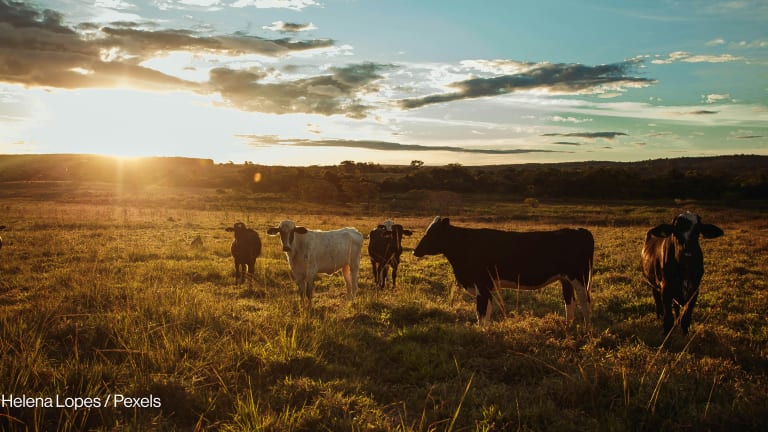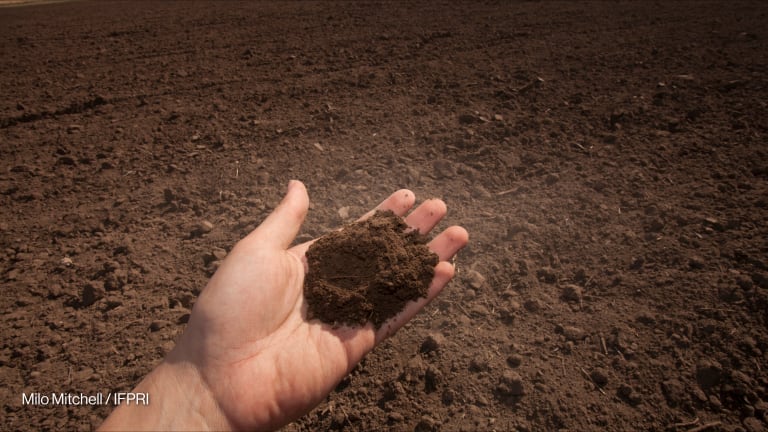
Delegates from around the world are in Nairobi, Kenya, this week for the annual United Nations Environment Assembly. This year’s theme, “innovative solutions,’’ acknowledges the need for fresh thinking to produce sustainable, healthy food choices in a time of escalating climate change, biodiversity losses, and global population growth.
I commend the organizers of the conference for their ambition to enhance the world’s economic, food, and environmental security simultaneously. For many people, these are uneasy bedfellows. Environmentalists, for example, worry about the impacts of agriculture on wildlife and other natural resources, while conservationists may not fully understand the needs of local communities to use lands for livestock grazing and crop farming.
80 percent of Kenyans depend on agriculture.
— FAOIt will come as a surprise to many UNEA delegates to hear one of my solutions for reducing poverty, hunger, and wildlife losses, here in Kenya. It involves investing in sustainable livestock systems.
This solution will not come as a surprise to Kenyans, over 80 percent of whom depend on agriculture. In our smallholder farm and herding households, livestock is typically the family’s most valuable asset. The animals are not only an irreplaceable source of protein and other vital nutrients but also the main source of income and insurance against disaster. In households with no access to formal banking, animals are “four-legged savings accounts” that families draw on to pay for essentials such as food, school fees, and medical bills.
Livestock is critical, not just for poor households, but for the broader economic health of all of Kenya. Producing, processing, and selling milk, meat, and eggs contributes over 40 percent of the economic output from our entire agricultural sector. In our more fertile lands, farm animals make crop farming possible by enriching soils with manure and pulling plows for cultivation. And in the 80 percent of our lands too dry for crop farming, herds of cattle, goats, sheep, and camels share the savannahs with wildlife, and, like the wildlife, move to track grass and water resources as they change with the seasons.
The opportunities livestock present here is enormous. With a vibrant livestock sector, we can build the wealth and nutrition and health of Kenyans. With livestock, we can achieve 100 percent food security, create jobs for our youth, and empower women in rural and urban areas alike.
Are we making progress on the use of antimicrobials in animals?
An annual report on the use of antimicrobial agents in animals aims to respond to the deaths of 700,000 people each year attributed to drug resistance.
But what about environmental harm? Is it possible to produce more food in more efficient and more environmentally friendly ways? Yes, it is possible. Take this example in Kenya. Since the 1930s experts had made dire warnings that a fast-rising farm population in the drylands of Machakos County, south of Nairobi, would strip the land bare. Instead, as the population tripled over the years, agricultural yields and values have risen while soil erosion dropped dramatically. Key to this so-called “Machakos miracle” — the sustained intensification of agriculture and concomitant restoration of lands — say the experts, has been the close integration of livestock raising with crop growing.
Today, livestock offer even greater opportunities. By making Kenya’s many smallholder dairy farms more efficient and productive, for example, we can dramatically reduce the amount of methane — a potent greenhouse gas produced by cattle — generated for every liter of milk cows provide. Kenyan dairy farmers are already planting fodder trees and Africa’s native Brachiaria grass that nourish soils and cows alike. Kenyan herders are already making use of advanced mobile and satellite technologies to monitor and restore the health of remote grazing lands that have sustained the co-existence of pastoral and wildlife populations here for thousands of years.
Extending such practices to millions of households will decrease Kenya’s greenhouse gas emissions — already extremely low compared to wealthy countries — while boosting household incomes, estimated by as much as $1000–$2000 a year. Improved production can also boost the nutrition of households, particularly of infants and children, for whom a single cup of milk or egg a day can help prevent the tragedy of stunted growth — and ensure the next generation of Kenyans has an opportunity to live a good and long life. Finally, as the UNEA delegates will be grappling with issues of climate change, let me remind readers that climate-smart livestock are among the best bets for farmers needing options for adapting to climate change.
In summary, the livestock systems of developing and emerging economies generate many gifts. And thankfully, there is an abundance of exceptional options emerging to shape future livestock systems so that they continue to build the health and wealth of people and lands, in Kenya and around the world — all while maintaining the natural resources and rich diversity of life we all value.
My hope is that the delegates to the UNEA take the opportunity while in Kenya to consider how a new era of sustainable livestock production can play a major role in supplying the “innovative solutions” they have come here to find.








